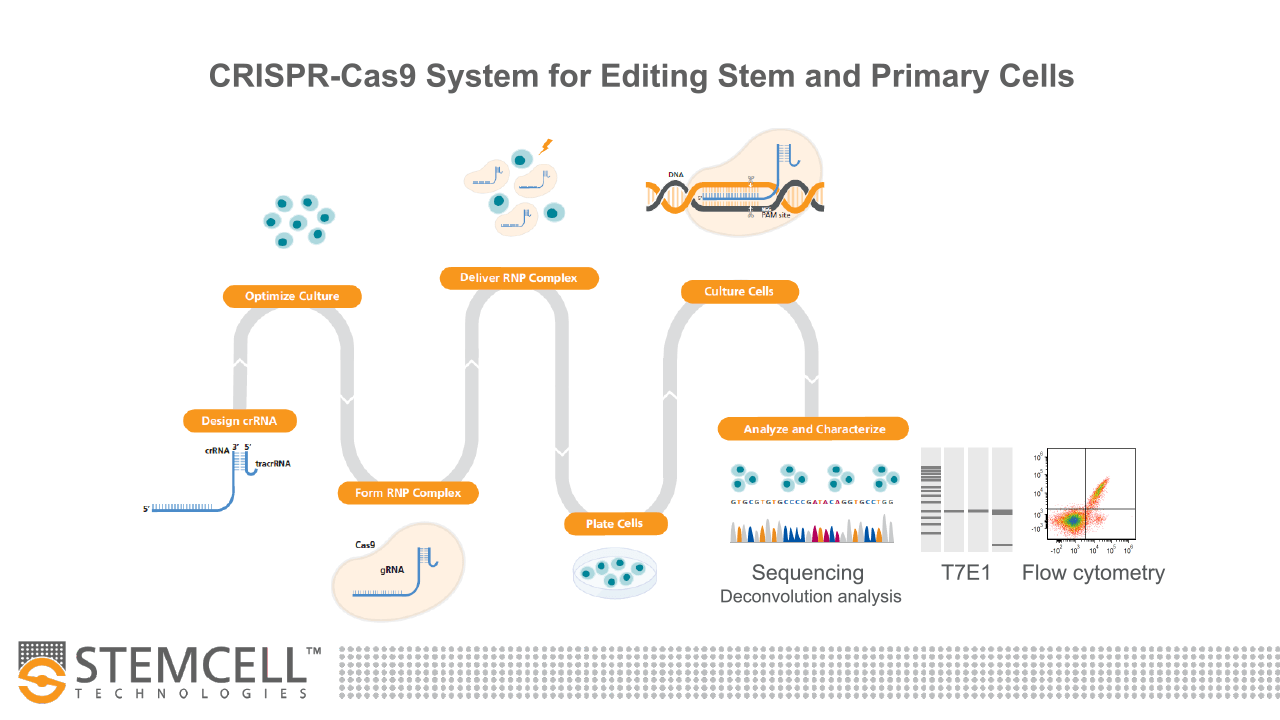Genome Editing of Pluripotent Stem Cells
Human pluripotent stem cells (hPSCs) hold great promise for the study and treatment of human disease owing to their ability to differentiate into many specialized cell types of the human body. The use of genome editing tools to generate specific DNA variants in hPSCs, by either introducing disease-specific mutations or correcting genetic aberrations, provide more accurate modeling of human disease when differentiated into human-derived tissues. Advances in genetic tools such as zinc-finger nucleases (ZFNs), transcription activator-like effector nucleases (TALENs) or most recently clustered regularly interspaced short palindromic repeat (CRISPR), have improved the ease and efficiency of genome editing in hPSCs.
Explore the resources below to support your genome editing using hPSCs.
Optimized Workflows for High-Efficiency Genome Editing in Stem and Primary Cell Types
View this webinar presentation by Dr. Ashley Watson to learn more about optimized workflows for CRISPR-Cas9 genome editing in difficult-to-manipulate cell types, including human pluripotent stem cells and primary T cells.
View Now >-
 Genome Editing From Modeling Disease to Novel TherapeuticsThe use of genome editing tools to generate specific DNA variants in hPSCs provide more accurate modeling of human disease when differentiated into human-derived tissues. View this webinar presented by Dr. Chad Cowan at Harvard University, who discussed the design and use of TALENs or CRISPR/Cas9 systems with hPSCs and the applications of modified hPSCs, including disease modeling and gene therapy.
Genome Editing From Modeling Disease to Novel TherapeuticsThe use of genome editing tools to generate specific DNA variants in hPSCs provide more accurate modeling of human disease when differentiated into human-derived tissues. View this webinar presented by Dr. Chad Cowan at Harvard University, who discussed the design and use of TALENs or CRISPR/Cas9 systems with hPSCs and the applications of modified hPSCs, including disease modeling and gene therapy.







